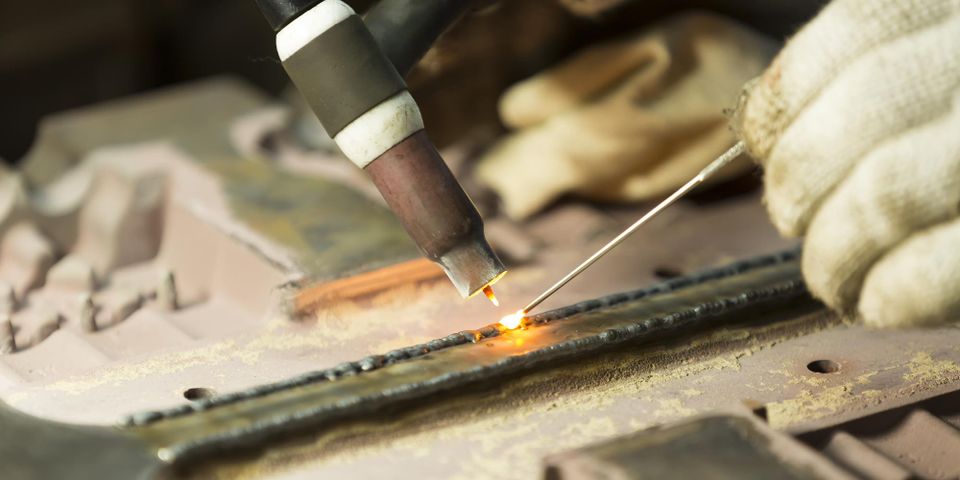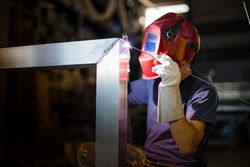
TIG welding — also known as gas tungsten arc welding — is the most versatile way to fuse metals, and it’s used heavily in the aerospace and automotive industries. However, it requires the right environment to work effectively. Not only is it the hardest type of welding to master, but it also requires specific gases to avoid ruining the metal due to oxygen and water vapor exposure.
The Role of Gas in TIG Welding
Shielding gases protect the welding area from water vapor and oxygen, which reduce the strength of the weld. The gases are denser than air, meaning they keep oxygen and water vapor away from the welding arc. Preventing these atmospheric contaminants allows the welding to occur at higher temperatures without oxidizing, or rusting, the metal.
Which Gases Are Used in TIG Welding?
 The only two noble, or inert, gases used in TIG welding are helium and argon. Depending on the project at hand, inert gases can work alone, but they’re most commonly used in tandem with semi-inert gases, including carbon dioxide, hydrogen, and nitrogen.
The only two noble, or inert, gases used in TIG welding are helium and argon. Depending on the project at hand, inert gases can work alone, but they’re most commonly used in tandem with semi-inert gases, including carbon dioxide, hydrogen, and nitrogen.
The gases serve different purposes. Argon, for instance, breaks down oxide to prevent rusting and smooths out the metal to prevent impurities, such as oxygen and water vapor, from entering the surface. Helium supplies additional heat to the welding torch. The combination of gases used can influence the shape of the metal as well as speed up the welding process.
Whether you need TIG welding or another fabrication method for an upcoming project, get in touch with Brady’s Welding Specialties. They’ve assisted Tacoma, WA, customers with various projects, ranging from vent hoods to food processors, for over 40 years. You can bring your project directly to their shop, or their welders can come to you with their mobile equipment. Call the family-owned and -operated company at (253) 475-4608 to discuss your needs today, and visit them online to read more about their services.
About the Business
Have a question? Ask the experts!
Send your question

